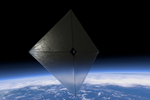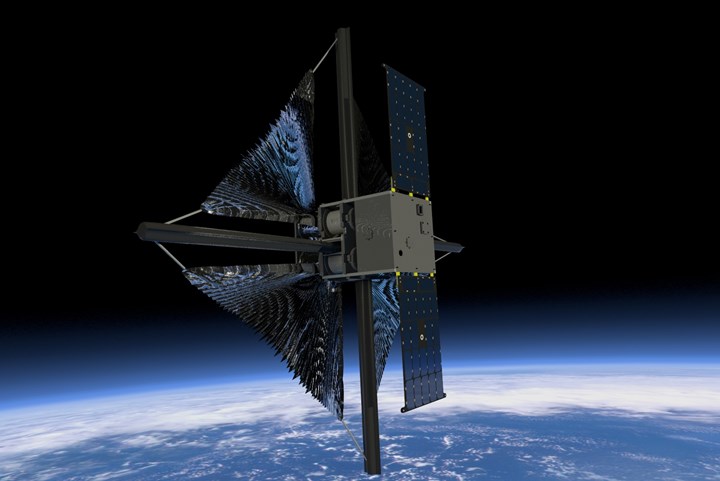NASA selects Rocket Lab to launch composite solar sail
NASA’s Advanced Composite Solar Sail System is expected to launch from Rocket Lab’s Electron carbon fiber composite launch vehicle in mid-2022.
Rocket Lab USA Inc. (Long Beach, Calif., U.S.), a leader in launch services and space systems, has been selected to launch NASA’s (Washington D.C., U.S.) Advanced Composite Solar Sail System (ACS3) on its Electron launch vehicle.
NASA’s ACS3 technology uses composite materials in its novel, lightweight booms that deploy from a CubeSat to support a solar sail. Solar sails are designed to employ the pressure of sunlight for propulsion, eliminating the need for a conventional rocket propellant.
ACS3 is scheduled for lift-off from Rocket Lab Launch Complex 1 in mid-2022. The Electron launch vehicle’s Kick Stage is capable of deploying individual satellites to unique orbits even when flying as part of a rideshare, which was a key factor in Rocket Lab being selected as the launch provider. ACS3 requires a higher altitude than the other rideshare payloads launching on the same mission, so after deploying the first payloads, the Kick Stage will perform another burn with its 3D-printed Curie engine to raise the orbit and deploy ACS3.
According to NASA, data obtained from the ACS3 demonstration will guide the design of future larger scale composite solar sail systems that could be used for space weather early warning satellites, near-Earth asteroid reconnaissance missions or communications relays for crewed exploration missions.
Peter Beck, Rocket Lab’s founder and chief executive, says, “It seems fitting to launch NASA’s Advanced Composite Solar Sail System on Electron, the world’s first full carbon [fiber] composite orbital launch vehicle. We’re excited to see composites used yet again to unlock new capabilities in space.”
Related Content
-
Recycling end-of-life composite parts: New methods, markets
From infrastructure solutions to consumer products, Polish recycler Anmet and Netherlands-based researchers are developing new methods for repurposing wind turbine blades and other composite parts.
-
Plant tour: Albany Engineered Composites, Rochester, N.H., U.S.
Efficient, high-quality, well-controlled composites manufacturing at volume is the mantra for this 3D weaving specialist.
-
Sulapac introduces Sulapac Flow 1.7 to replace PLA, ABS and PP in FDM, FGF
Available as filament and granules for extrusion, new wood composite matches properties yet is compostable, eliminates microplastics and reduces carbon footprint.

















